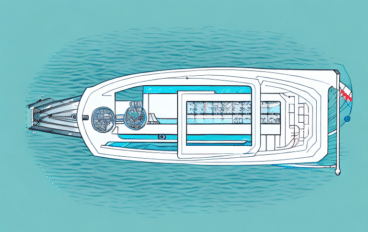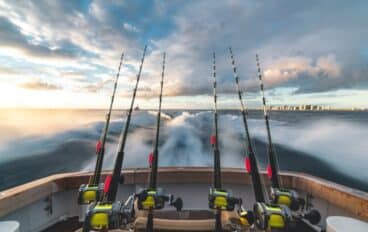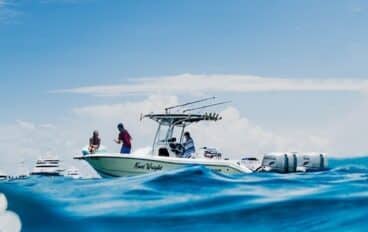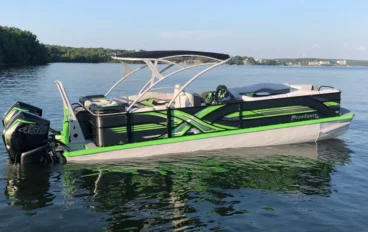
Today, we embark on a journey to unravel the secrets of choosing the perfect fish finder for your boat. As we navigate through an ocean of options, we’ll explore different types of fish finders, delve into their key features, and offer valuable insights to help you make an informed decision. So, let’s set sail and discover the secrets of fish finders.
What is a Fish Finder?
Not entirely sure yet what a fish finder is? A fish finder is a device used by anglers to locate fish and underwater structures in bodies of water. It utilizes sonar technology to transmit sound waves into the water, which then bounce off objects and return as echoes.
By interpreting these echoes, fish finders provide information about the presence of fish, their depth, and the shape of the underwater terrain. This valuable information helps anglers identify productive fishing spots, track fish movements, and make informed decisions to improve their chances of a successful catch. Fish finders come in three main types and offer a range of features, catering to different fishing styles and needs.
Fish Finders vs. Depth Finders: What is the Difference?
Before we proceed much further, you might be wondering if a fish finder is the same thing as a depth finder.
A depth finder is designed to provide information about the water’s depth. A fish finder employs similar technology, but its primary function is to offer insights into the presence and location of schools of fish. Additionally, fish finders often include mapping capabilities to assist in navigation.
Due to the overlapping features, many individuals opt to purchase a fish finder instead, as it encompasses the functionality of a depth finder.
Consequently, several manufacturers have phased out the production of standalone depth finders, and the majority of available products on the market are now marketed and labeled as “fish finders,” combining both depth detection and fish locating capabilities into a single comprehensive device.
Types of Fish finders
Now that you know what fish finders are and how they differ from standalone depth finders, we can go over the three main categories of fish finders: standalone, combination, and networked. Each type offers unique features and functionalities, catering to various fishing styles and preferences.
Standalone Fish Finders
Standalone fish finders are the perfect choice for those seeking a dedicated and straightforward device. They focus solely on fish finding capabilities, providing accurate readings and helping you locate that elusive catch.
With a user-friendly interface and intuitive controls, these fish finders allow you to concentrate on the art of angling without distraction. They come equipped with a clear and concise display, enabling you to interpret sonar information with ease. Standalone fish finders are ideal for anglers who prioritize simplicity and efficiency in their fishing expeditions.
Note that there is a bit of overlap between this and the networked category of fish finder. Whether the unit is also considered “standalone” depends largely on its simplicity and controls.
Choose a manual fish finder if you have a small vessel and not enough room for a larger type of fish finder, or if you want manual control.
Combination Fish Finders
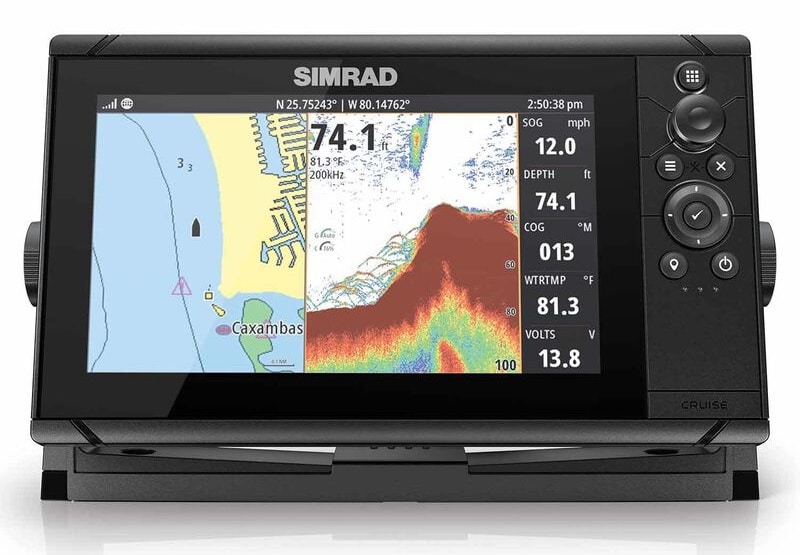
If you crave versatility and desire additional functionalities alongside fish finding capabilities, combination fish finders are the way to go. We also refer to them as “chartplotters.”
These multifunctional devices combine the power of traditional fish finders with features such as GPS navigation, chartplotting, and even radar. By integrating these functions into a single unit, combination fish finders offer convenience and efficiency in your fishing voyages.
You can navigate with ease, mark your favorite fishing spots, and explore new territories confidently and safely. These devices provide a comprehensive solution for anglers who seek a multi-purpose tool to enhance their fishing experience.
Networked Fish Finders
Last but not least, we have networked fish finders. Imagine being able to pull data for fish-finding from a wide range of sources. Through data sharing and connectivity, networked fish finders provide a comprehensive view of the marine environment.
By allowing you to compare information from multiple sources, these powerful systems enhance your ability to identify fish, locate underwater structures, and make strategic, informed decisions.
Additionally, networked fish finders offer excellent ease-of-use from anywhere on your vessel. You can control the fish finder just by connecting your smartphone to the device through wifi or Bluetooth.
For anglers who crave a technologically advanced fishing experience, networked fish finders offer unparalleled opportunities for exploration and discovery.
Also Read: The 5 Best Electric Anchor Winches
Key Features and Buying Considerations When Choosing a Fish Finder
Now that you have a grasp of the different types of fish finders, let’s dive deeper into the key features and factors to consider before making a purchase. By paying attention to these essential considerations, you can ensure your fish finder meets your specific needs and offers you excellent performance for a long time to come.
Power:
When it comes to choosing a fish finder, power is paramount. It determines the strength of the sonar signals and the depth penetration capabilities of the device. Fish finders with higher wattage can emit stronger signals, allowing you to explore greater depths and identify fish hiding in the darkest recesses.
Here are a couple of rules of thumb:
- You can see depth readings of up to 400 feet for every 100 watts of power at 50 kHz.
- You can see depth readings of up to 200 feet for every 100 watts of power at 200 kHz.
More powerful fish finders are able to send out sonar waves more rapidly. If you want to fish in shallow water, a lower power fish finder is suitable. But if you plan on doing some deep sea fishing, go for a higher power model.
Screen Size:
The screen size of a fish finder plays a crucial role in providing a clear and detailed display. A larger screen allows for better visibility, making it easier to interpret the information presented. You can analyze sonar readings, spot fish arches, and identify underwater structures with greater clarity.
You will also appreciate a larger screen if you are purchasing a multi-functional split-screen device rather than just a standalone fish finder.
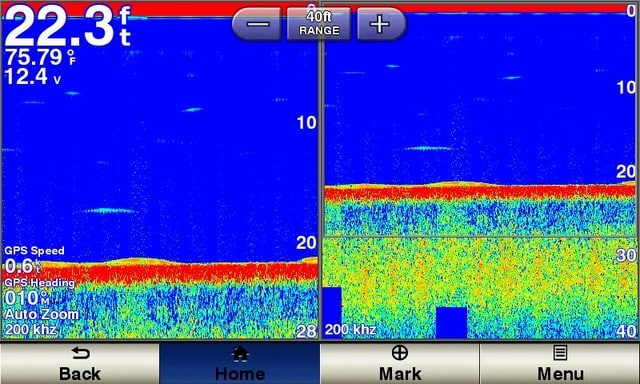
Of course, a larger screen does take up more space. When selecting a fish finder, consider the available space on your boat and choose a screen size that will be a fit both for your vessel and your intended use of the fish finder.
Screen Resolution:
Clarity is key when it comes to interpreting the underwater world. The screen resolution of a fish finder is measured in pixels per inch, and determines the level of detail you can discern from its display.
Opting for higher resolutions ensures crisp images and sharp contours, enabling you to identify fish species and underwater features with precision. By investing in a fish finder with excellent screen resolution, you will have a much better experience.
Cone Angles:
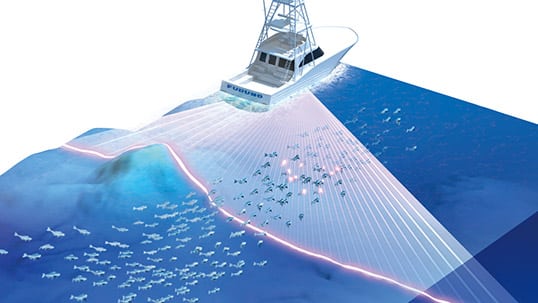
Imagine casting a wide net underwater! Cone angles represent the coverage area of the sonar beam emitted by a fish finder. Wider cone angles provide a broader view, capturing more of the underwater terrain. This allows you to scan a larger area and increases your chances of locating fish and identifying productive fishing spots.
Alas, this functionality comes with one drawback—deep water sensitivity decreases. So, there is no one-size-fits-all recommendation for the cone angle; you need to decide based on your requirements.
16-20 degrees are average cone angles, but there are some super-narrow and super-wide options as well—anywhere from 9-60 degrees.
Transducer and Frequency:
The heart of our fish finder lies in its transducer. The transducer is responsible for transmitting and receiving sonar signals, making it the most crucial component in detecting fish and underwater structures.
Choosing the right transducer and frequency is vital, as they determine the quality and accuracy of the sonar signals.
There are multiple materials for transducers, such as plastic, steel and bronze. You will need a bronze transducer if your hull is made out of wood or fibreglass. Go for stainless steel if your hull is steel or aluminum. For other types of hulls, plastic is fine.
The frequencies for transducers include 200, 192, 83 and 50 kHz. Pick low frequencies for deeper water and high frequencies for shallower water.
Ultimately, your choice of transducer depends on the type of fishing you engage in, the material of your hull, and the specific conditions where you are fishing. Matching the transducer to your fishing needs and the type of water you explore ensures optimal performance and reliable sonar readings.
Water-Resistance:
Venturing into the great outdoors means encountering unpredictable weather conditions and occasional splashes. Ensuring your fish finder is water-resistant is crucial for its durability and longevity. Look for fish finders that come with a high water-resistance rating, allowing them to withstand rain, waves, and occasional splashes without compromising their functionality.
Mounting Options:
A securely affixed fish finder provides stability during turbulent waters and allows for effortless adjustments and optimal viewing angles.
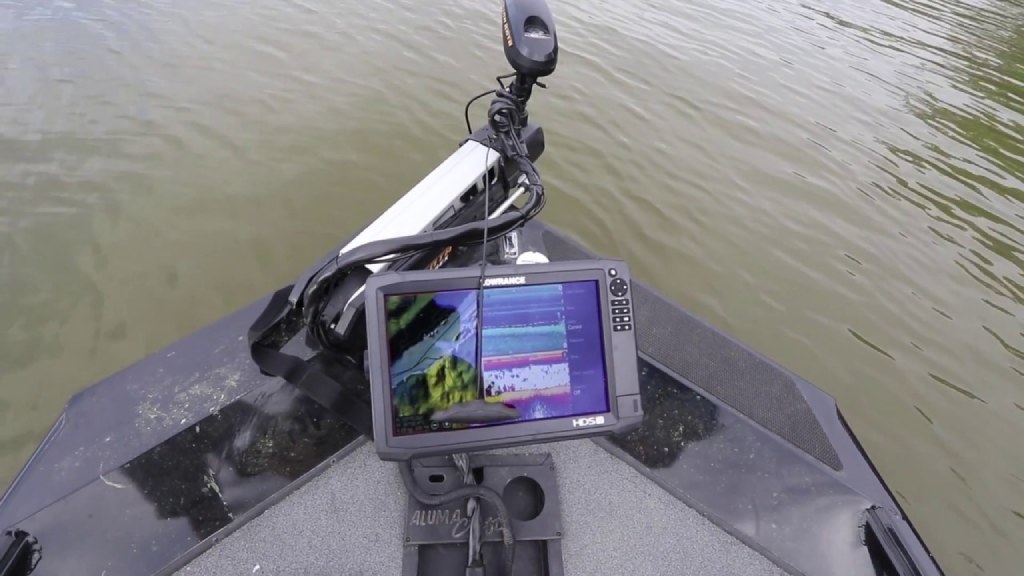
Here are the most common mounting options for fish finders:
- Transom mount: As the name suggests, this is a mounting option for your boat’s transom. You might choose this option if your boat measures less than 30 feet. Keep in mind that the signal may not always be reliable due to the presence of propeller bubbles.
- In-hull mount: If you have a thin hull, you can opt for an in-hull mount. Make sure your fish finder has a sensitive transducer.
- Thru-hull mount: You will need to drill a hole in your hull for this mounting option. It works well for large vessels.
- Trolling motor mount: There are some fish finders that can be mounted to the trolling motor itself.
When you are deciding on a mounting option, consider the layout of your boat, the available space, and your personal preferences. You can also opt for a portable fish finder, which may give you multiple mounting options.
Summary
We have now successfully navigated through the vast ocean of fish finder options, uncovering the key features and considerations that will aid you in making an informed decision.
By understanding the different types of fish finders available, analyzing their features, and aligning them with our fishing goals, you can embark on a seamless and fruitful fishing adventure. Check out our guide to the top fish finders to discover the ideal device for your vessel.

